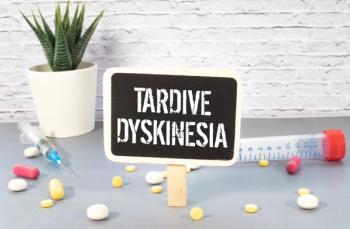
Spotlight: Issues in ADHD
Catch up on all the latest in ADHD from the virtual APSARD 2022 Annual Meeting.
Steven Pliszka, MD, chair of The American Professional Society of ADHD (attention-deficit/hyperactivity disorder) and Related Disorders (APSARD) annual program committee, joined Jeffrey Newcorn, MD, APSARD president, in welcoming attendees to their virtual 2022 Annual Meeting, noting the conference was putting attendees “on the ground floor of exciting developments in the field.” Pliszka said the conference would highlight issues in genetics, neuroimaging, psychological variables, and environmental variables. “I think we’re moving to really integrating all these different aspects so we can think much more broadly about where ADHD fits into psychopathology in general,” he added. “And it will get us thinking more about new ways to intervene and to treat people.”
The 4-day meeting was held January 13 to 16, 2022. In-depth coverage can be found online at
SGM College Students
As separate groups, college students with ADHD and college students who identify as a sexuality and gender minority (SGM) have increased risk for functional impairments, psychiatric comorbidities, and risky behaviors.1 According to Destiny Orantes, PhD, from Syracuse University, and colleagues, previous research had not considered if these outcomes are further increased in SGM students who have ADHD. Orantes shared findings from their recent research in a poster presentation.
The study assessed functional impairments, psychiatric comorbidities, and engagement in risky behaviors in 4 groups: (1) SGM students with ADHD, (2) SGM students without ADHD, (3) non-SGM students with ADHD, and (4) non-SGM students without ADHD. Data from the American College Health Association-National College Health Assessment 2019-2021 III were used. The researchers also sought to examine the prevalence of ADHD in SGM college students.
They found ADHD prevalence increased in SGM populations: 15% compared with 8% in non-SGM individuals. Additionally, SGM students with ADHD reported the highest levels of functional impairments, substance use, and psychiatric comorbidities.
The research results suggest, Orantes said, that future studies should consider the underlying reasons for SGM students having high rates of ADHD, and how best to reduce these negative outcomes. Specifically, treatment plans should take into account the separate difficulties students face from their ADHD diagnosis and their SGM identities, as well as how best to target the risky behaviors and comorbidities.
Reporting by Leah Kuntz
Reference
1. Auerbach RP, Mortier P, Bruffaerts R, et al; WHO WMH-ICS Collaborators.
The APSARD Health Equity Task Force
“The [APSARD] task force was launched in relation to the amazing societal changes that are happening...in association with the awareness that equity means creating fair, equitable opportunities for all of us,” Martin Katzman, MD, FRCP(C), APSARD Health Equity Task Force chair, told attendees. “We’re hoping to build connections within the APSARD community, to enhance diversity of the organization, and to reach out across boundaries as well as to partner within all of our communities to raise awareness and to increase opportunities for treatment for populations that may not get the same access to treatment.”
Amy Glasofer, DPN, RN, nurse scientist with Virtua, shared an analysis of 41 studies relating to ADHD, race, ethnicity, and disparity; Catherine Dingley, PhD, RN, FNP, FAAN, associate professor in the Nursing Department of the University of Las Vegas, Nevada, also worked on the project.
They found 66.7% of studies noted Black children were significantly less likely than white children to be diagnosed with ADHD, and 65% of Black children with ADHD were significantly less likely than white children to receive medication. In addition, compared to white children, she noted Black children were more likely to discontinue medication and more likely to experience gaps in treatment; less likely to receive an α2 agonist alone; and more likely to receive significantly lower doses of stimulant. The findings suggest that, although diagnostic disparities have been reduced over time, treatment disparities still exist for minority children with ADHD.1
Reporting by Erin O'Brien
Reference
1. Katzman M, Higgins N, Glasofer A, et al. Introducing the APSARD Health Equity Task Force. Presented at 2022 APSARD Conference. January 14, 2022.
Preschool-Aged Patients
“ADHD in preschool children is a valid and reliable condition,” reported Ann Childress, MD, president of the Center for Psychiatry and Behavioral Medicine, Inc, in Las Vegas, Nevada.
According to the 2014 National Survey of Diagnosis and Treatment of ADHD and Tourette’s, 30% of children diagnosed with ADHD receive their diagnosis before age 6; 16% receive the diagnosis at 4 years or younger.1 Impairment can be great for these patients, Childress said. For example, an epidemiological review of preschoolers diagnosed with ADHD found more than 40% had been suspended from school or daycare and about 16% had been expelled.2 In comparison, less than 1% of young children without ADHD were suspended.
The actions of young children with ADHD pose safety risks to themselves due the higher levels of hyperactive impulsivity, she said. “These are kids who are running out in traffic. They’re jumping off of things and breaking bones. They’re doing things that are dangerous, and they really need treatment for their safety,” she explained.
Childress reviewed efficacy and safety data for a number of common medications, noting some small behavior improvements as a result of the study medications. However, medications were associated with adverse events, including insomnia, gastrointestinal issues, irritability, sedation, and repetitive behaviors and thoughts. She also noted not all of these medications have been approved for the youngest patients.
Fortunately, there is good evidence for the efficacy of nonpharmacological interventions for preschoolers with ADHD, Childress reported. The New Forest Therapy, Helping the Noncompliant Child, and the Incredible Years series were among the programs she noted that have demonstrated efficacy. Furthermore, she spoke highly of parent training models that foster the implementation of positive reinforcement to promote positive behaviors; ignoring low-level provocative behaviors; and responding in a clear, consistent, and safe manner to unacceptable behaviors.
“You have to carefully consider both developmental aspects and comorbidity when you’re establishing a diagnosis, and the medication efficacy and tolerability profile may not look as good in the little guys as it does in older children,” she concluded.
Reporting by Heidi Duerr, MPH
References
1. Visser SN, Zablotsky B, Holbrook JR, et al.
2. Egger HL, Kondo D, Angold A.
Newsletter
Pharmacy practice is always changing. Stay ahead of the curve with the Drug Topics newsletter and get the latest drug information, industry trends, and patient care tips.











































































































































































































